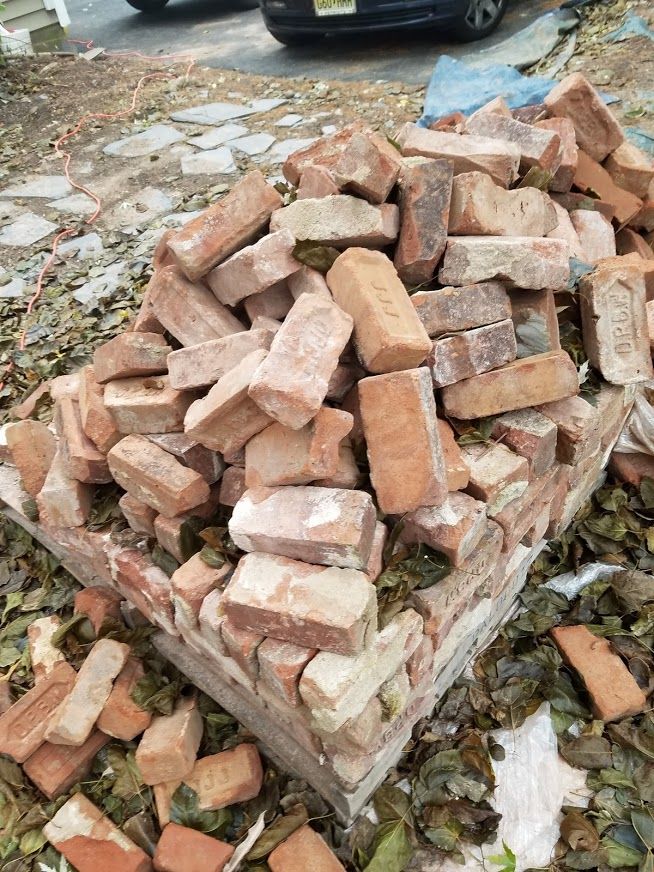Getting Started

My wife and I bought this house with the great backyard space for our dogs, but we knew we would eventually need to replace the neglected deck. The wood sagged and moved when you walked across, a symptom of rotting that our home inspector attributed to the deck’s location on a slope: perfect for water to puddle under every time it rained.
RELATED: DIY Smarts: How to Monitor a Home with a Smart Phone
The Demolition
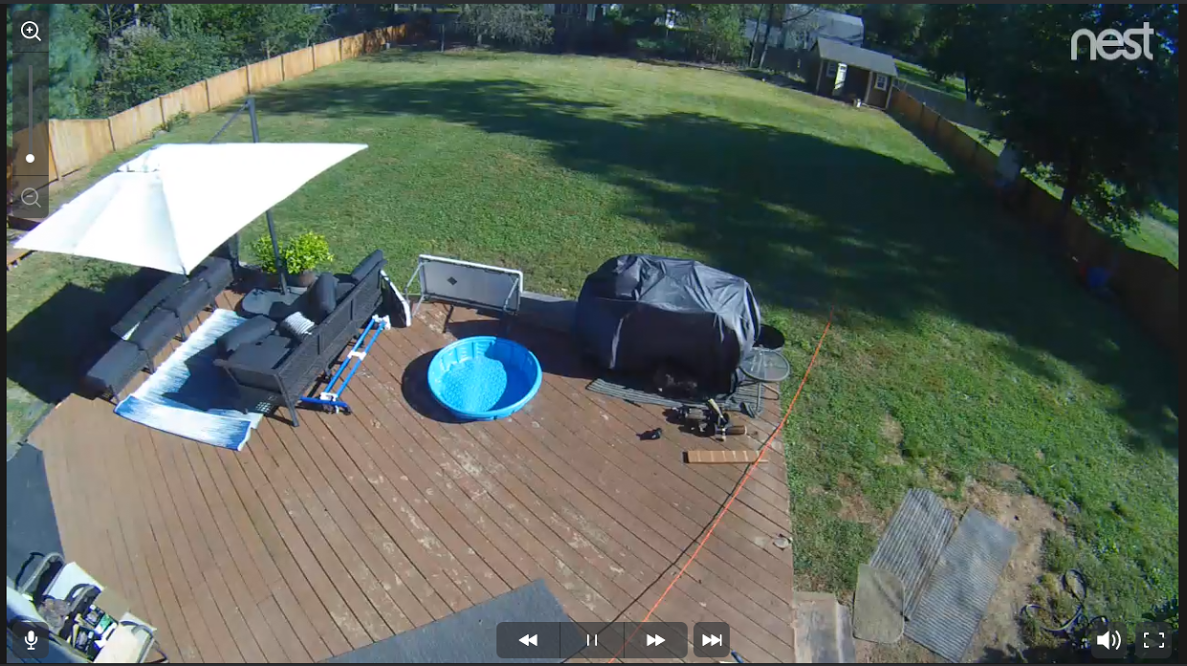
We started the project by clearing away the grill and deck furniture and removing railings and built-in benches. We were very curious to see how rotted the deck actually was and what was living underneath it. After carefully removing every board, we were surprised to find that the top layer of wood was in pretty good shape. The thought came to reuse the viable wood for a raised garden bed, a fun second project that also saved us the cost of purchasing a dumpster.
RELATED: How to Build a Raised Planting Bed
Dismantling the Deck

My brother-in-law and I worked on this project over the course of a few weekends. We pried up the boards just enough to loosen the nails, and then lifted the nails out, board by board. It took about a day to take the entire deck apart.
Reusing the Wood
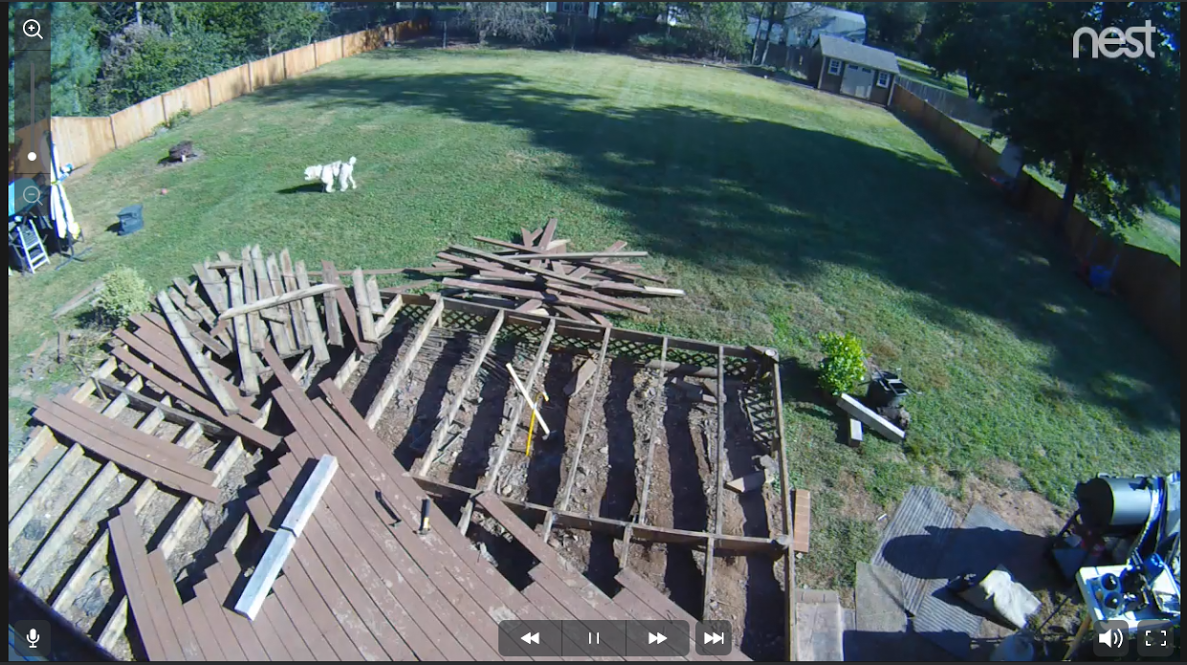
There were two main beams that ran underneath the deck, but both rotted since the wood was not treated. All of the other boards were treated, so we’re planning to reuse them on the raised garden bed.
Found!
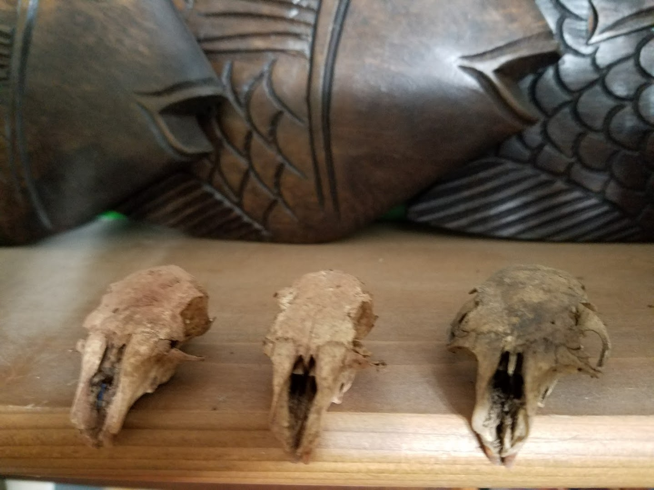
During the demolition we found three mice skulls, which are now decorating my office. (That’s not weird is it?)
There was also a huge hole which appeared to have once belonged to a groundhog. I believe now that the groundhog has relocated to under my shed.
Just for Oliver

Our dog Oliver had hip surgery. Truth be told, we rushed to get the demolition done in a day so he could get in and out of the house easily.
Making Accomodations
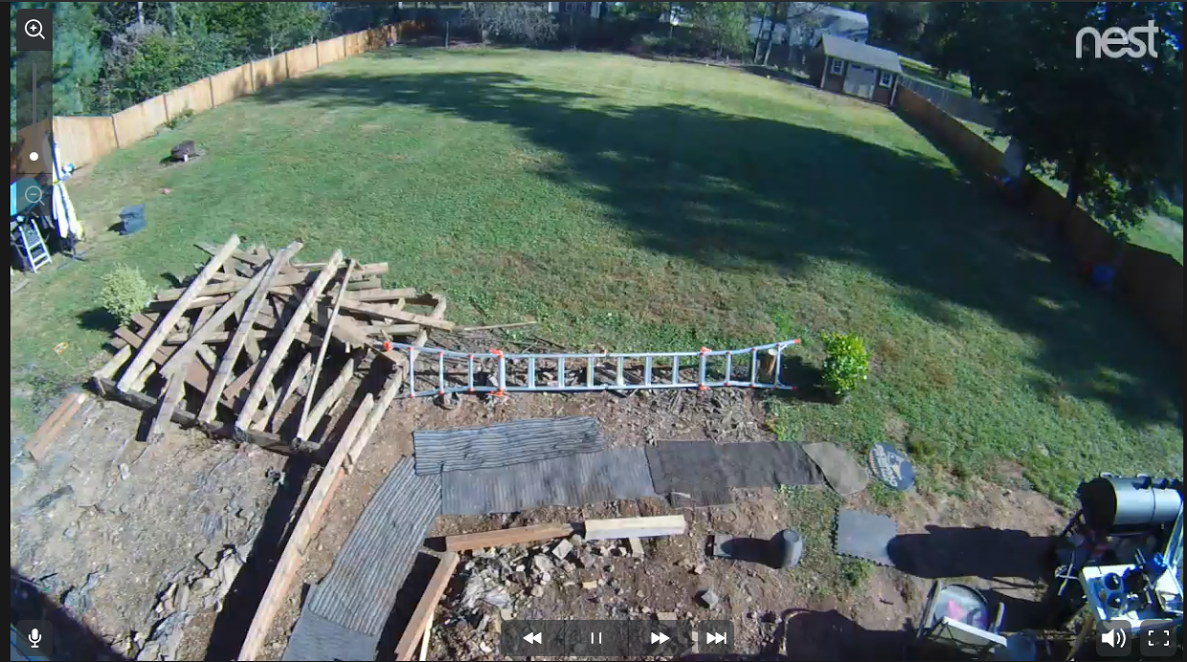
I have another dog, Betty, who is blind. Since both dogs have access to a dog door, we made sure that we created safe, temporary paths for Oliver and Betty to access the yard.
RELATED: Pet DIY Projects
Removing Cement Posts
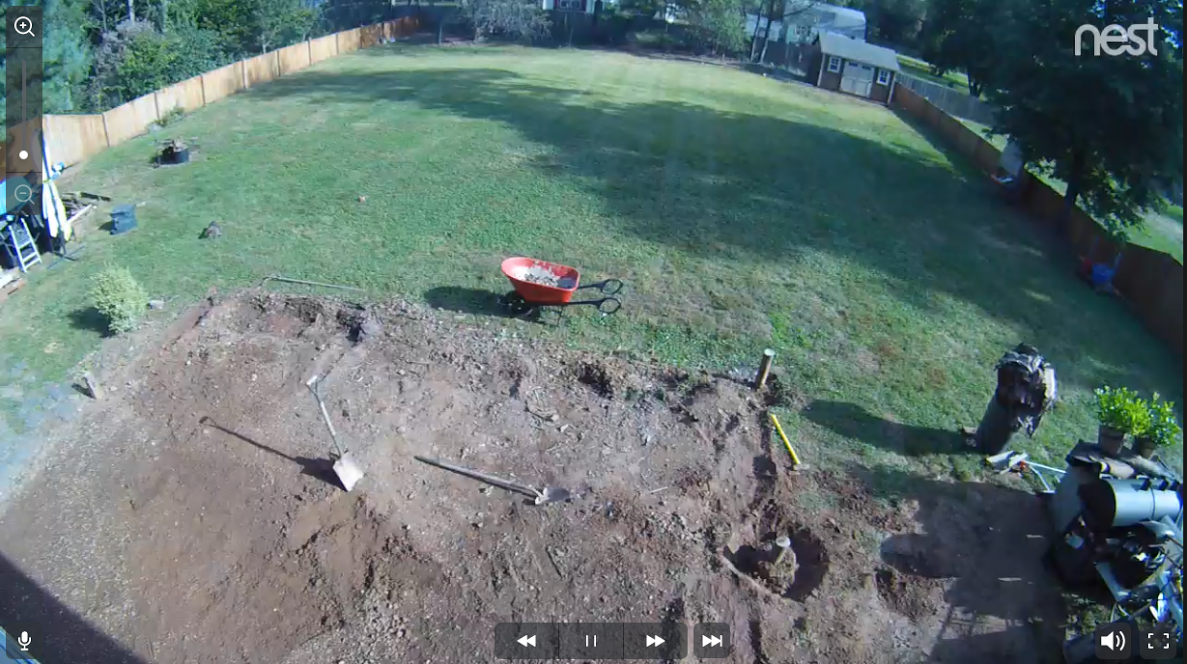
Later, we found a few cement posts that needed to be removed. It actually took hours to dig them out, and I wish I was able to rent a digger to save at least a day’s worth of time moving dirt and creating a level area. The hitch on my SUV wasn’t equipped electrically for a digger, but I’m hoping to have that fixed for future projects.
Leveling the Ground
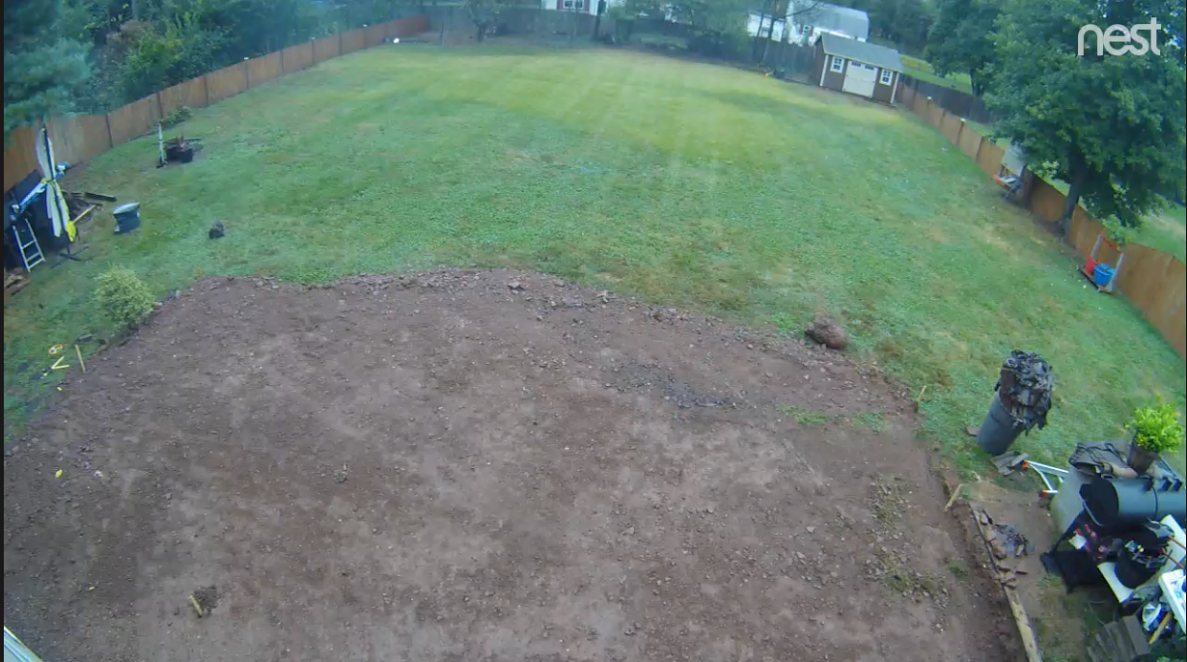
My wife designed the look and feel of the patio. We left space near the house for foundation plants and herb gardens. Most patios start with digging out the ground, but we actually purchased loads of earth, gravel, and sand to raise the level of the ground and slope water away from the house. We leveled the soil, then spread liner over it to ensure weeds didn’t pop up through the soil.
RELATED: How to Establish a Level Grade Line for Landscaping
Laying Gravel
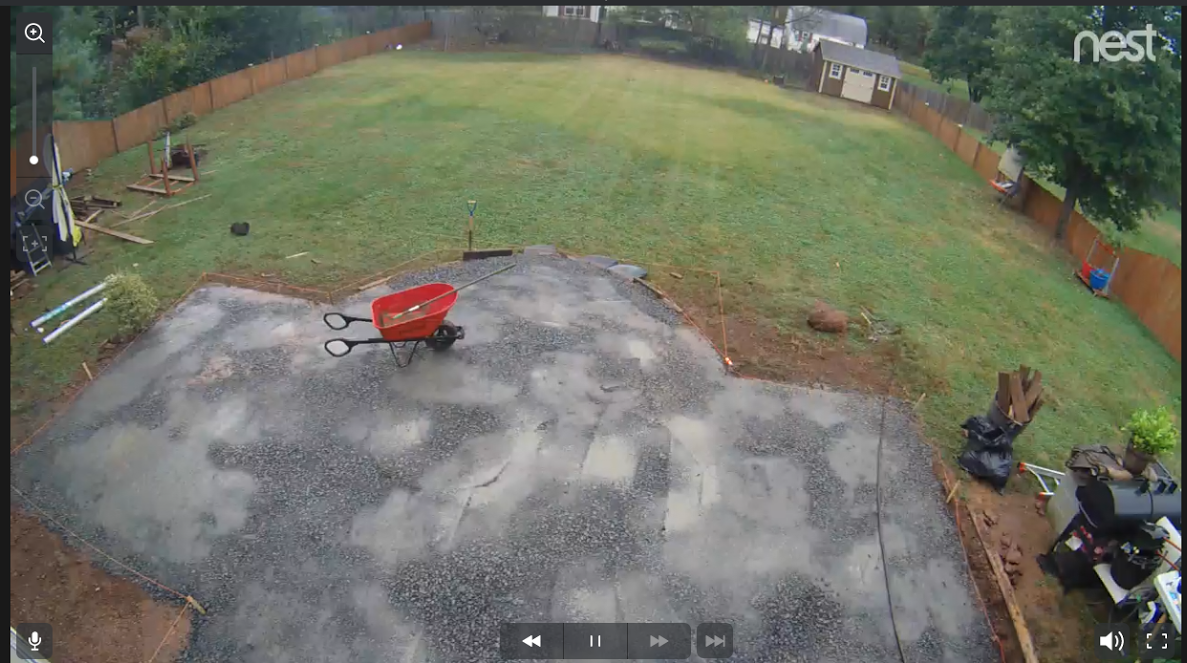
Next, we laid gravel with the help of a compactor rented from Home Depot. We measured and staked out everything for the patio, then added and compacted more gravel. For the next week, we watered the earth to ensure we weren’t building the structure on unstable ground.
RELATED: How to Lay a Gravel Path
Purchasing the Brick
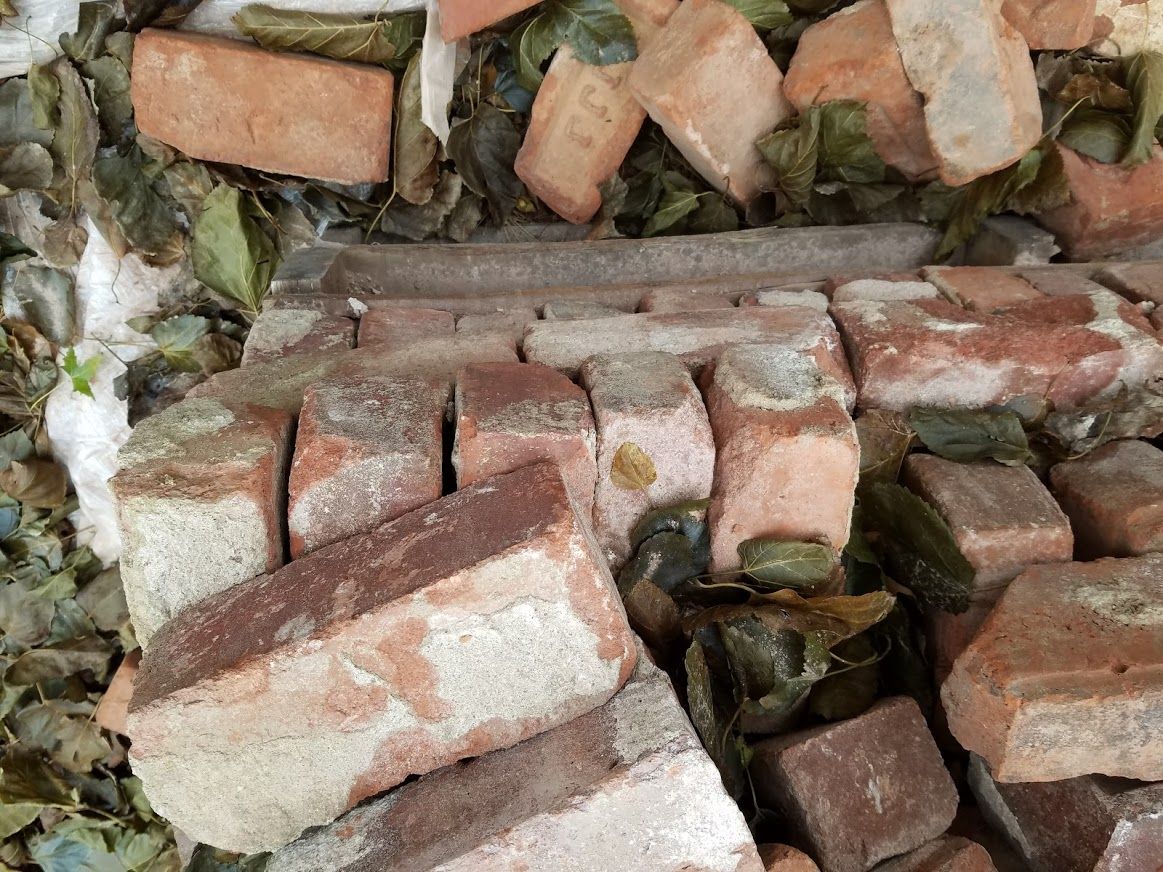
We used 7 pallets of recycled bricks for the patio, paying between $0.45 and $0.50 per recycled brick (new bricks are about $0.80 each). Of the 7 pallets, about 2 were of easily-cleaned brick, but some pallets were awful: the bricks ended up being various sizes and shapes, which caused other challenges. Most of the bricks were covered with cement on multiple sides.
RELATED: How to Use Salvaged Building Materials in New Construction
Cleaning the Bricks
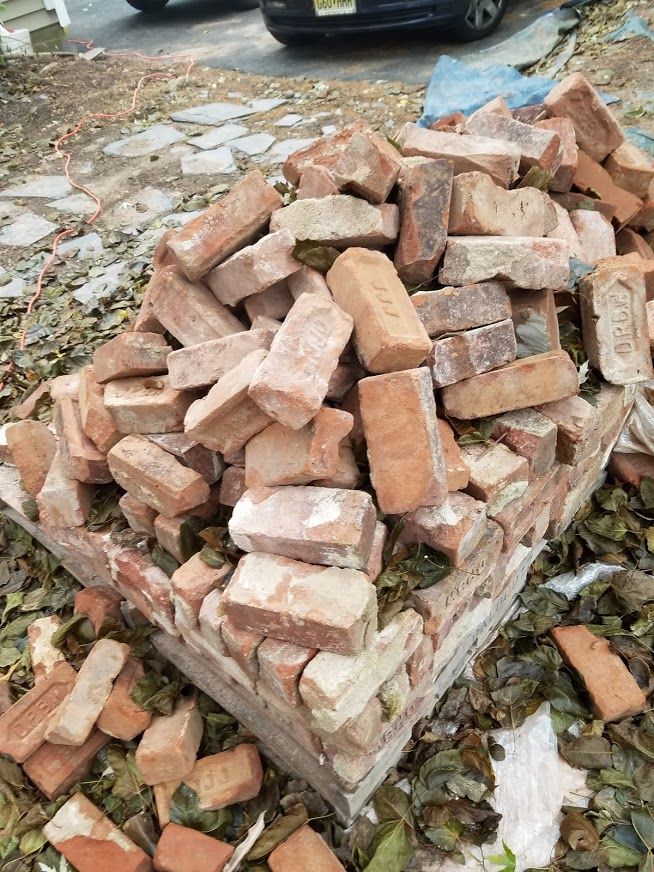
I cleaned almost every brick by hand using a grinder at a pace of about one pallet of bricks per day. This was the longest, most tedious part of the project…and there were many moments when I was swearing under my breath at the design choice. By the end of the project I think I had about 1.5 pallets left of unusable bricks, but I’m hoping to reuse them on another project.
Though the recycled brick did save some money, we were really going for the aesthetic of the older brick to match the look and feel of our home.
RELATED: How to Hand-Cut a Brick
It’s All in the Details
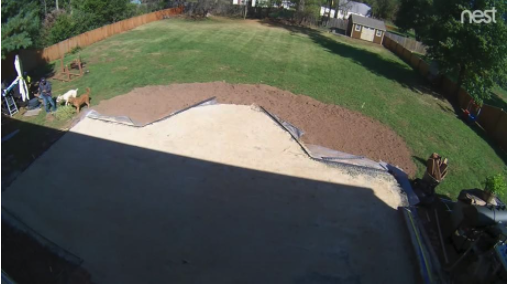
We added edging, then laid and compacted sand.
RELATED: Ask Roger: Using Landscape Edging
Choosing a Pattern

The next challenge was to figure out the best pattern for laying our bricks of various sizes and shapes. Do you see the pattern? There is some logic to this madness, which I think turned out quite nicely in the end.
RELATED: Brick Path Pattern Guide
Building a Retaining Wall
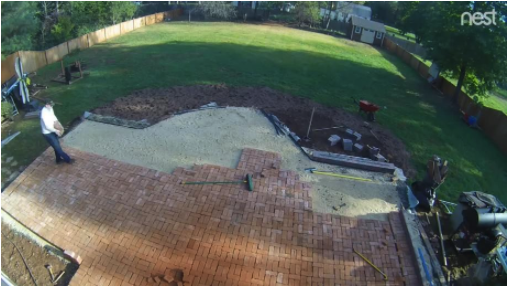
We placed a retaining wall on the right-hand side of the patio and added drainage to prevent future problems on our sloped lot with rain and snow.
Check out this 360-degree video at the halfway point of the project:
RELATED: How to Build a Retaining Wall
Constructing a Fire Pit
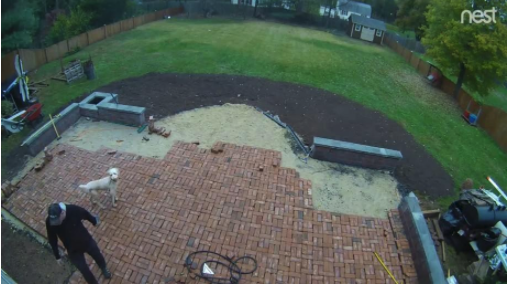
Seating and a fire pit were built on the perimeter.
RELATED: How to Build a Fire Pit
Finishing Touches
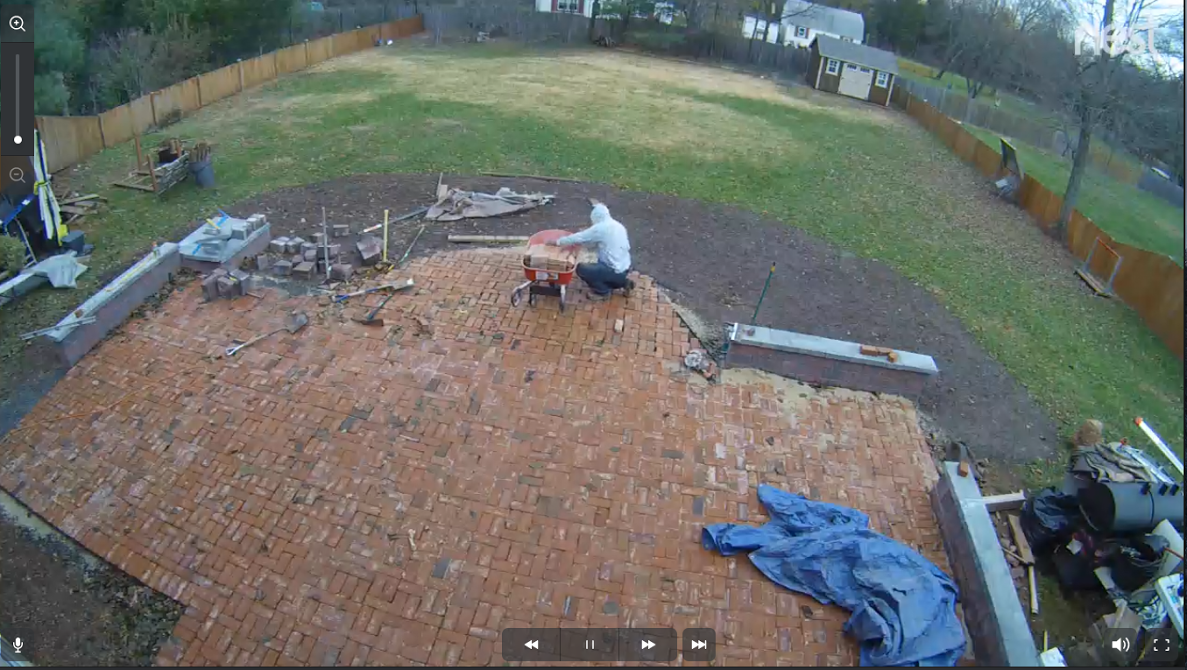
We finished laying the bricks and distributed sand between them. Finishing sand, which acts as a sort of cement, will be added at the end of the project, along with a coat of sealant for each brick.
Cutting the Bricks
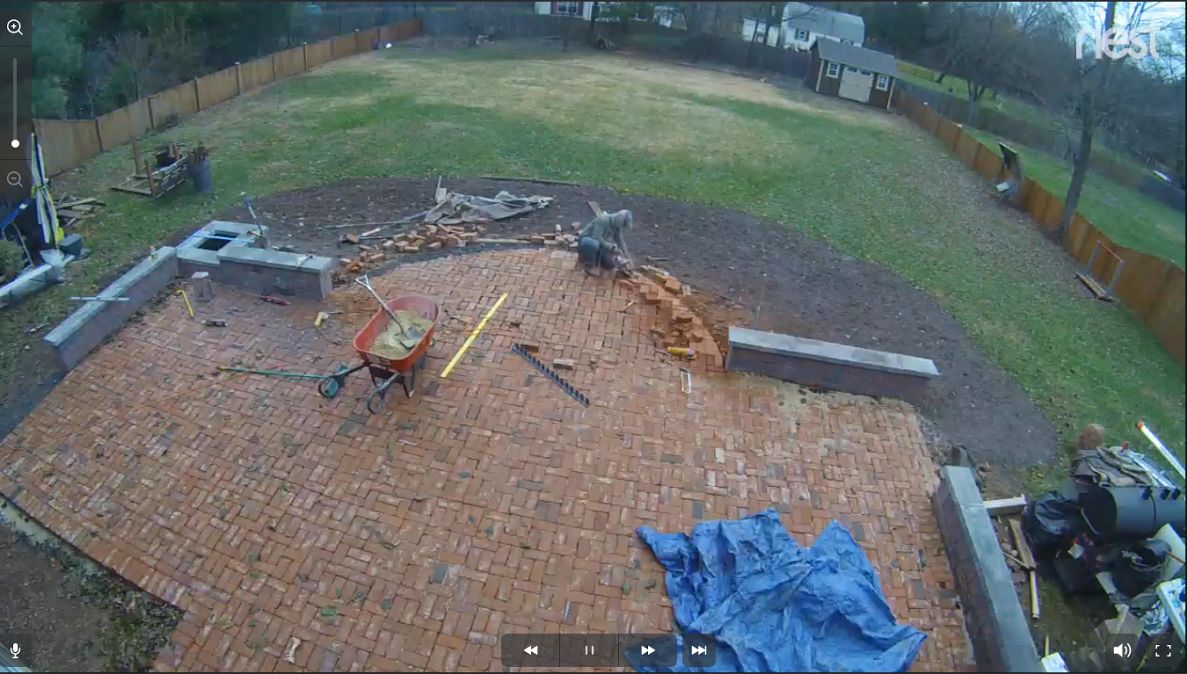
We cut the bricks to finish up the edging of the middle entrance way, per my wife’s design.
RELATED: How to Hand-Cut a Brick
Almost Done

We have not finished the project yet since the temperature began to dip below freezing. To finish up, we’d like to run a compactor on top of the bricks, add sealant, and add the finishing sand. We need to fertilize and cover the surrounding mud with burlap blankets to deter the dogs from walking through it, and then finish off the area with some landscaping.
I’ll post an update when we’re done!
Shown: Michael Bendell with his wife (center) and his brother-in-law (right).
Special thanks to Livingston Park Nursery and Landscape Supply in North Brunswick, NJ, and Morris Brick & Stone in Morristown, NJ.
We could not have done this without my brother-in-law who handled most of the project while I spent days and days grinding the bricks. I have a feeling he may enjoy the patio even more than he enjoyed the deck.
No animals were hurt during the making of this patio. —MB
